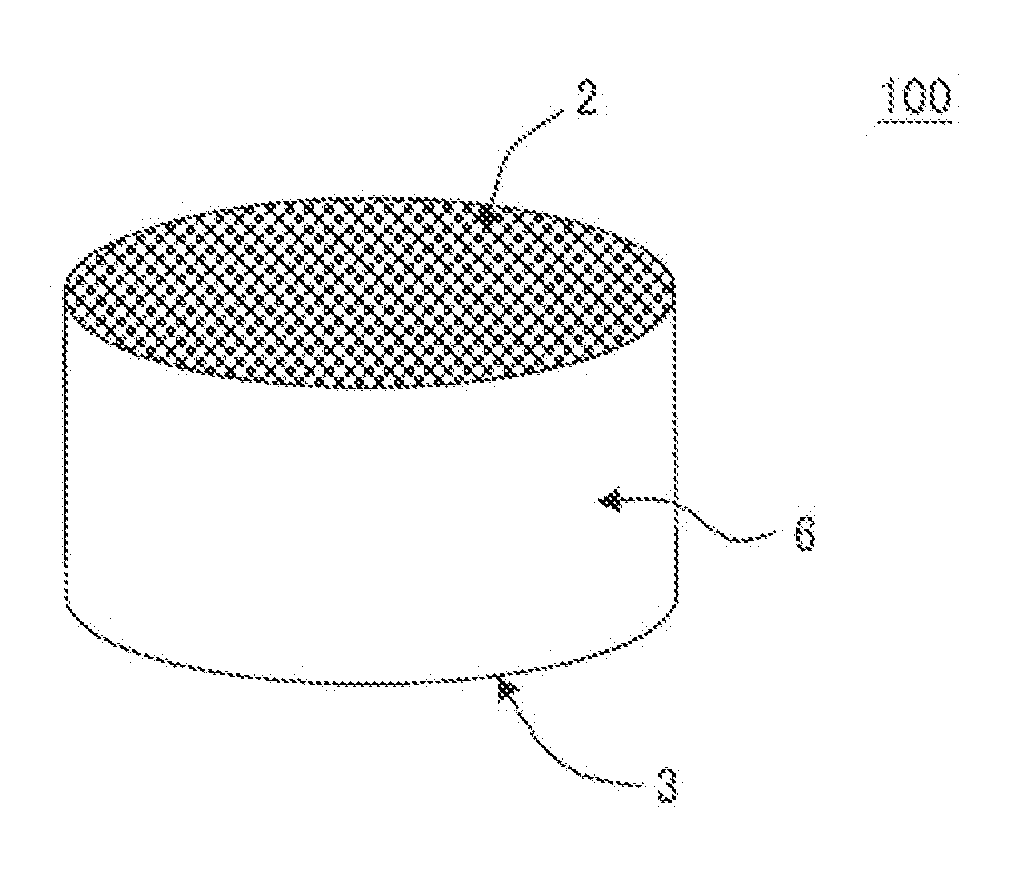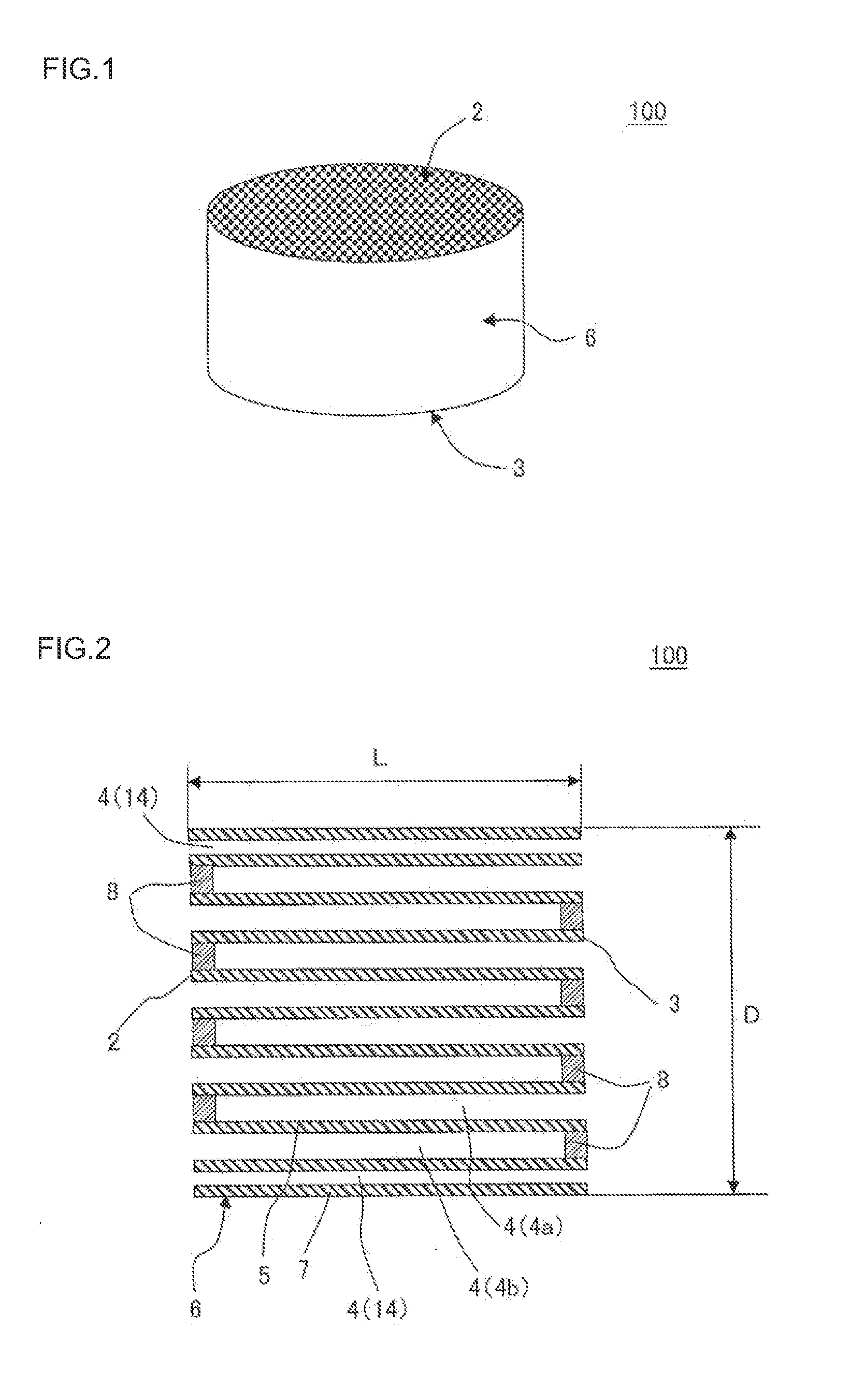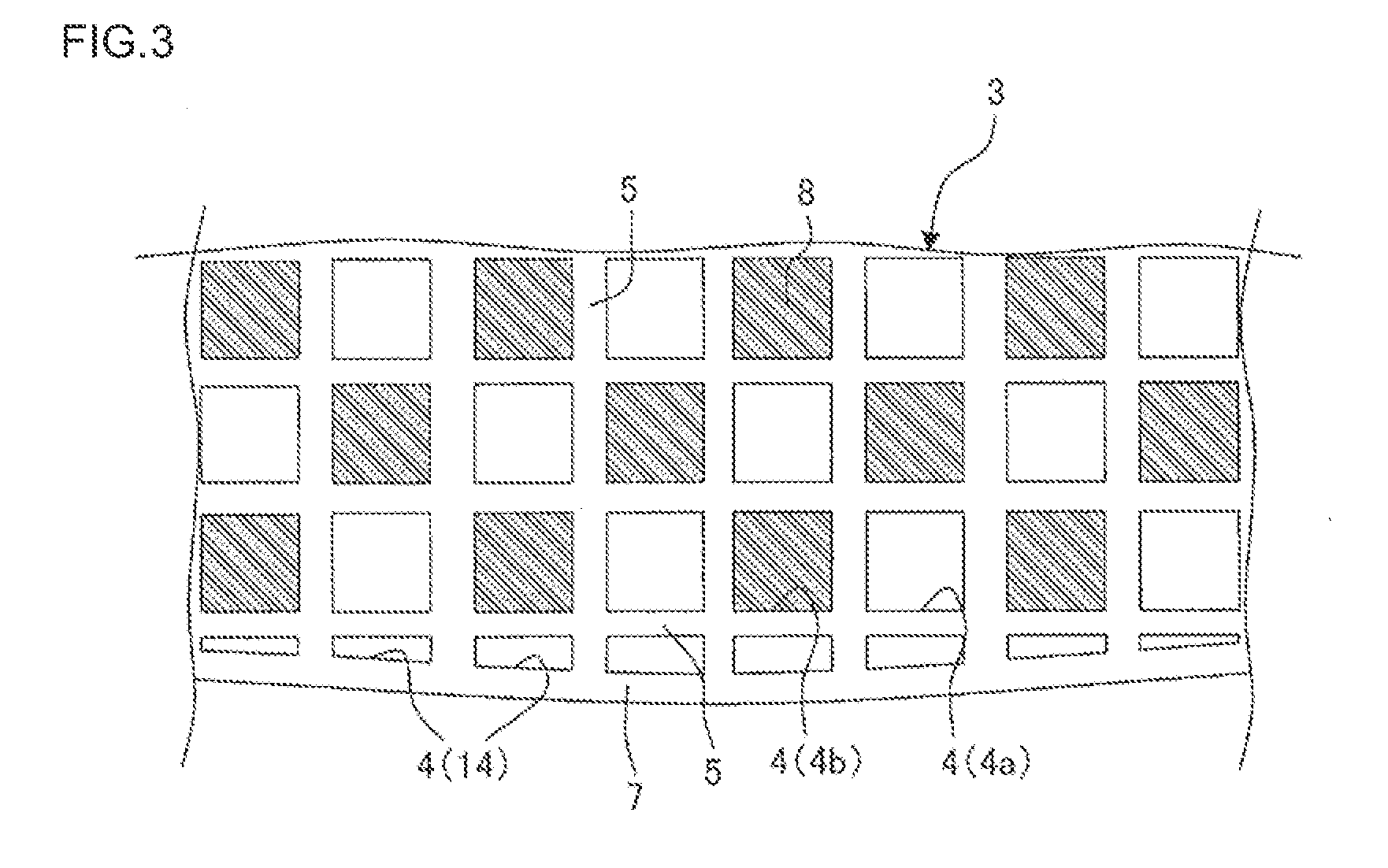Honeycomb catalyst body
a catalyst body and honeycomb technology, applied in the field of honeycomb catalyst bodies, can solve the problems of reducing engine output and the like, increasing the effective diameter of the honeycomb catalyst body, and increasing the pressure loss of the exhaust gas system
- Summary
- Abstract
- Description
- Claims
- Application Information
AI Technical Summary
Benefits of technology
Problems solved by technology
Method used
Image
Examples
example 1
First, alumina, aluminum hydroxide, kaolin, talc and silica were mixed to prepare a raw material for cordierite formation. To 100 mass parts of the raw material for cordierite formation were added 13 mass parts of a pore former, 35 mass parts of a dispersing medium, 6 mass parts of an organic binder and 0.5 mass part of a dispersing agent, followed by mixing and kneading, to prepare a puddle. Water was used as the dispersing medium; coke having an average particle diameter of 1 to 10 μm was used as the pore former; hydroxypropyl methyl cellulose was used as the organic binder; and ethylene glycol was used as the dispersing agent.
Then, the puddle was extruded using a given die to obtain a honeycomb formed body having a tetragonal cell shape and a cylindrical overall shape. The honeycomb formed body was dried using a microwave dryer and further dried completely using a hot-air dryer. The resulting honeycomb formed body was cut at the two ends for adjustment into a given size.
Then, a m...
examples 2 to 11
Comparative Examples 1 to 3
Honeycomb catalyst bodies of Examples 2 to 11 and Comparative Examples 1 to 3 were produced in the same manner as in Example 1 except that their diameters, lengths, L / D's, cell densities, rib thicknesses, porosities, cell area ratios, hydraulic diameters of complete cells, hydraulic diameters (maximums) of through-cells, areal ratios of through-cells in section, pore diameters, loaded amounts of catalyst, and amounts of noble metals were as shown in Table 1. Then, they were rated for “purification ratio”, “PM emission”, “durability”, “pressure loss” and “overall evaluation” in the same manners as in Example 1.
As is clear from Table 2, in the honeycomb catalyst bodies of Examples 1 to 11, as compared with the honeycomb catalyst bodies of Comparative Examples 1 to 3, the fine particles contained in the exhaust gas emitted from the direct injection type gasoline engine could be removed efficiently; the increases in pressure loss were small; the CO, HC and NOx...
PUM
| Property | Measurement | Unit |
|---|---|---|
| Fraction | aaaaa | aaaaa |
| Fraction | aaaaa | aaaaa |
| Pore size | aaaaa | aaaaa |
Abstract
Description
Claims
Application Information
 Login to View More
Login to View More - R&D
- Intellectual Property
- Life Sciences
- Materials
- Tech Scout
- Unparalleled Data Quality
- Higher Quality Content
- 60% Fewer Hallucinations
Browse by: Latest US Patents, China's latest patents, Technical Efficacy Thesaurus, Application Domain, Technology Topic, Popular Technical Reports.
© 2025 PatSnap. All rights reserved.Legal|Privacy policy|Modern Slavery Act Transparency Statement|Sitemap|About US| Contact US: help@patsnap.com



